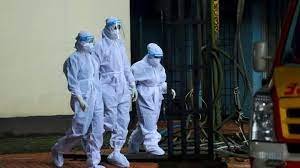Kerala’s Health Minister, Veena George, delivered a glimmer of hope to the state by announcing the full recovery of four Nipah virus patients, including a courageous nine-year-old boy. The patients, who had been receiving treatment in Kozhikode, have not only survived but have also tested double negative, signaling their complete recuperation.
Speaking to the news agency ANI, Minister Veena George stated, “Four people, including a nine-year-old boy, who were under treatment in Kozhikode for Nipah virus, have recovered and tested double negative (two samples tested in intervals).”
This positive development comes in the wake of a total of six reported Nipah virus infections in the district, with two unfortunate fatalities. The first victim, who succumbed on August 30, was identified as the index case, from whom the infection had initially spread.
Containment Zones Lifted: Earlier on September 27, the Kerala government took a significant step by lifting containment measures and restrictions in all zones within the northern district, as no new Nipah virus cases have emerged since September 16. In a Facebook announcement, District Collector A Geetha declared that all schools in the affected areas would reopen, allowing regular classes to resume.
Vigilance Still Required: While the restrictions have been eased, district authorities continue to emphasize the importance of remaining vigilant against the virus. They urge residents to maintain social distancing, wear masks, and use sanitizers to mitigate any potential risks.
Current Statistics: As of September 24, there were 915 individuals under observation, none of whom were classified as high-risk by health authorities. A total of 377 samples had been tested, with 363 yielding negative results.
Nipah vs. COVID-19: Dr. Rajeev Bahl, Director-General of the Indian Council of Medical Research (ICMR), underscored the severity of the Nipah virus by stating that its mortality rate far surpasses that of COVID-19. According to ICMR, Nipah carries a staggering 60 percent mortality rate, in stark contrast to COVID-19’s approximately 3 percent fatality rate in the country.
Understanding Nipah Virus:
The Nipah virus is primarily transmitted by fruit bats and poses a significant threat to both humans and animals. Its discovery traces back to 1999 when it caused a severe outbreak among pig farmers and individuals in close proximity to infected animals in Malaysia and Singapore. Human-to-human transmission can also occur through close physical contact, particularly involving body fluids.
Symptoms and Impact:
Initial symptoms of Nipah virus infection include fever, headaches, muscle pain, vomiting, and a sore throat. In advanced stages, it can progress to severe respiratory problems, encephalitis, seizures, and even coma within just 24 to 48 hours. The incubation period varies from four to 14 days but can extend up to 45 days. While most survivors fully recover from acute encephalitis, around 20 percent may experience lingering neurological issues such as seizures and personality changes, according to the World Health Organization (WHO).
In Summary:
- Kerala Health Minister Veena George announced the successful recovery of four Nipah virus patients in Kozhikode, including a nine-year-old boy.
- The state government lifted containment measures in the northern district, with no new Nipah cases reported since September 16.
- Vigilance and safety measures, such as social distancing and mask-wearing, remain crucial despite the easing of restrictions.
- Nipah virus has a mortality rate of around 60 percent, significantly higher than that of COVID-19.
- Nipah virus is primarily transmitted by fruit bats and can lead to severe symptoms, including encephalitis and neurological issues in survivors.


